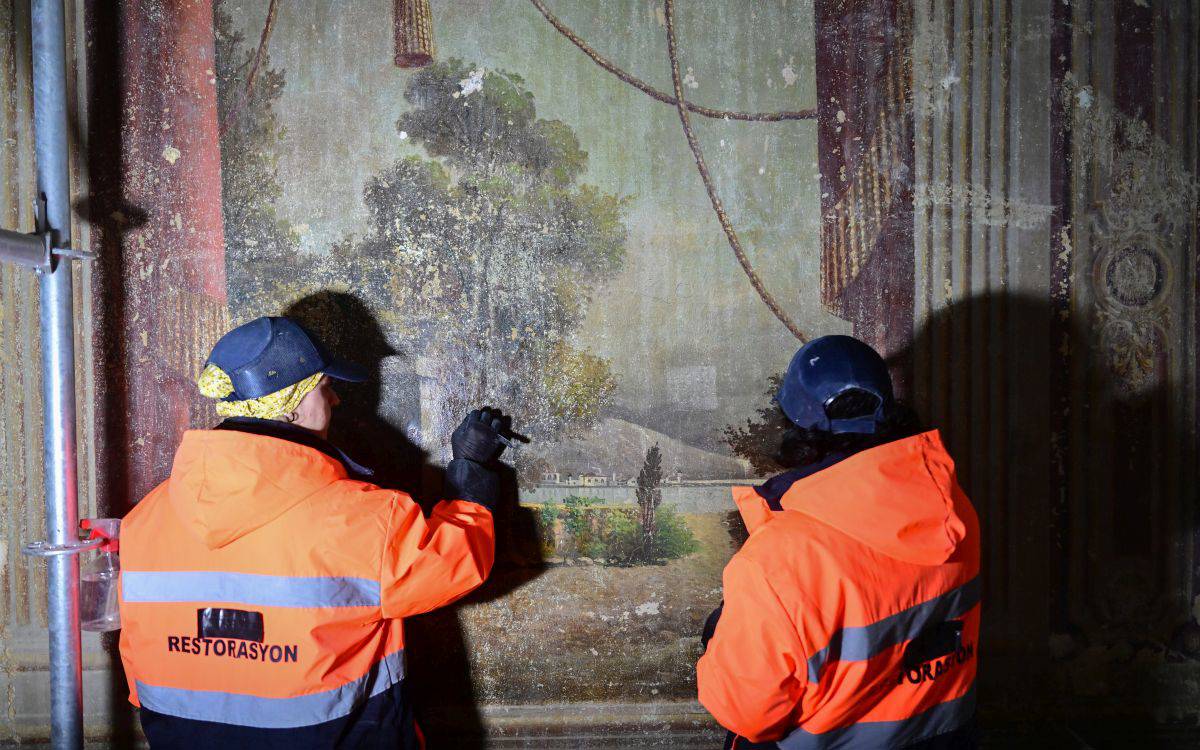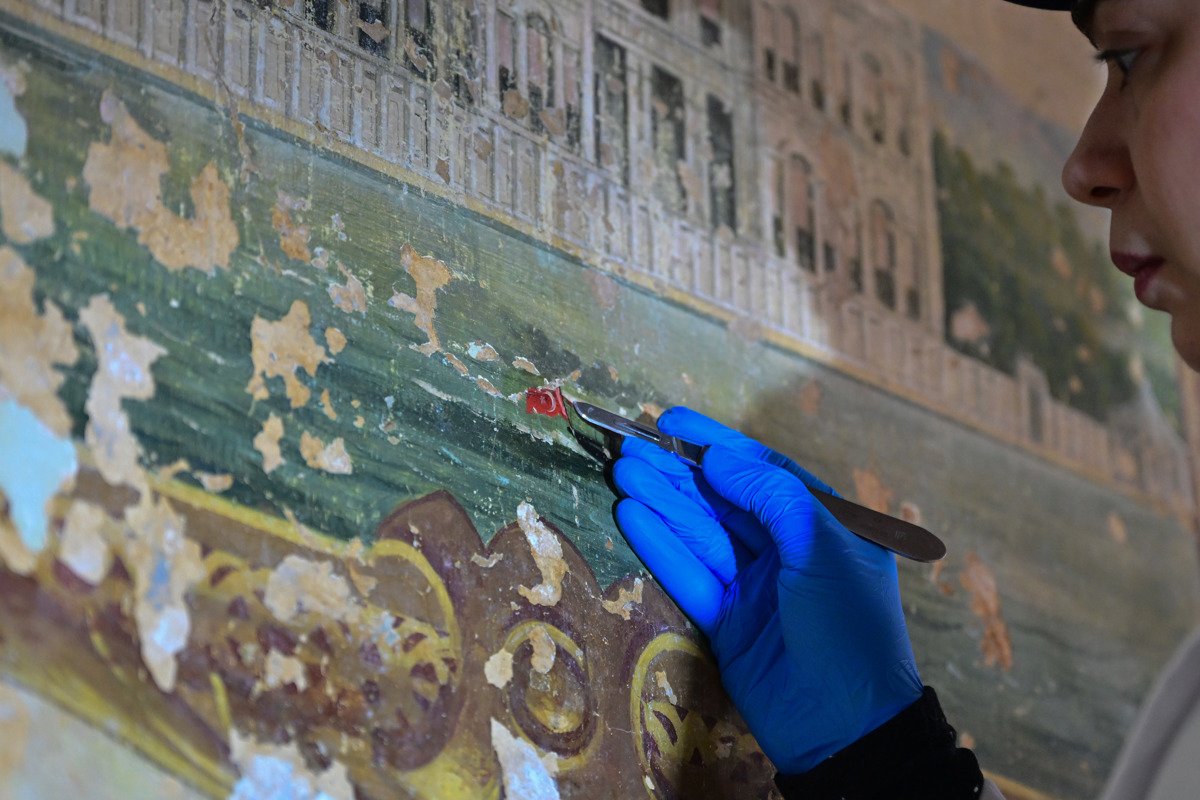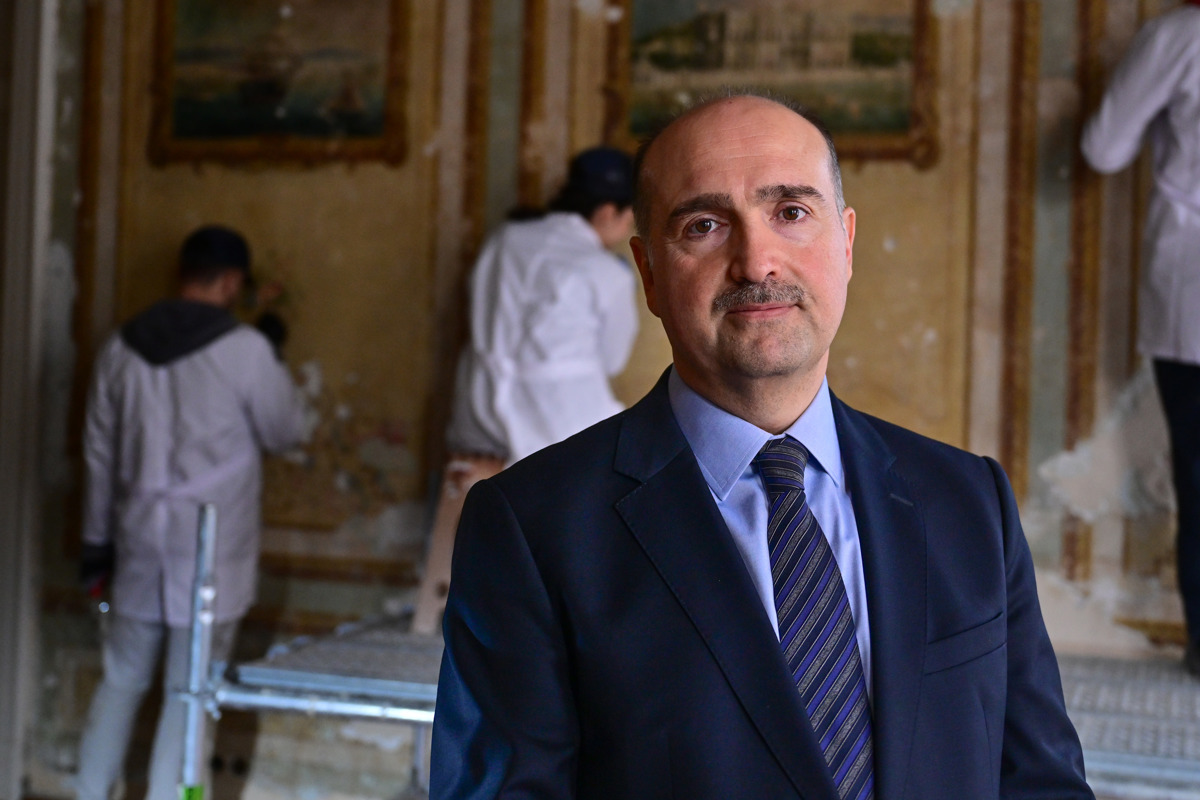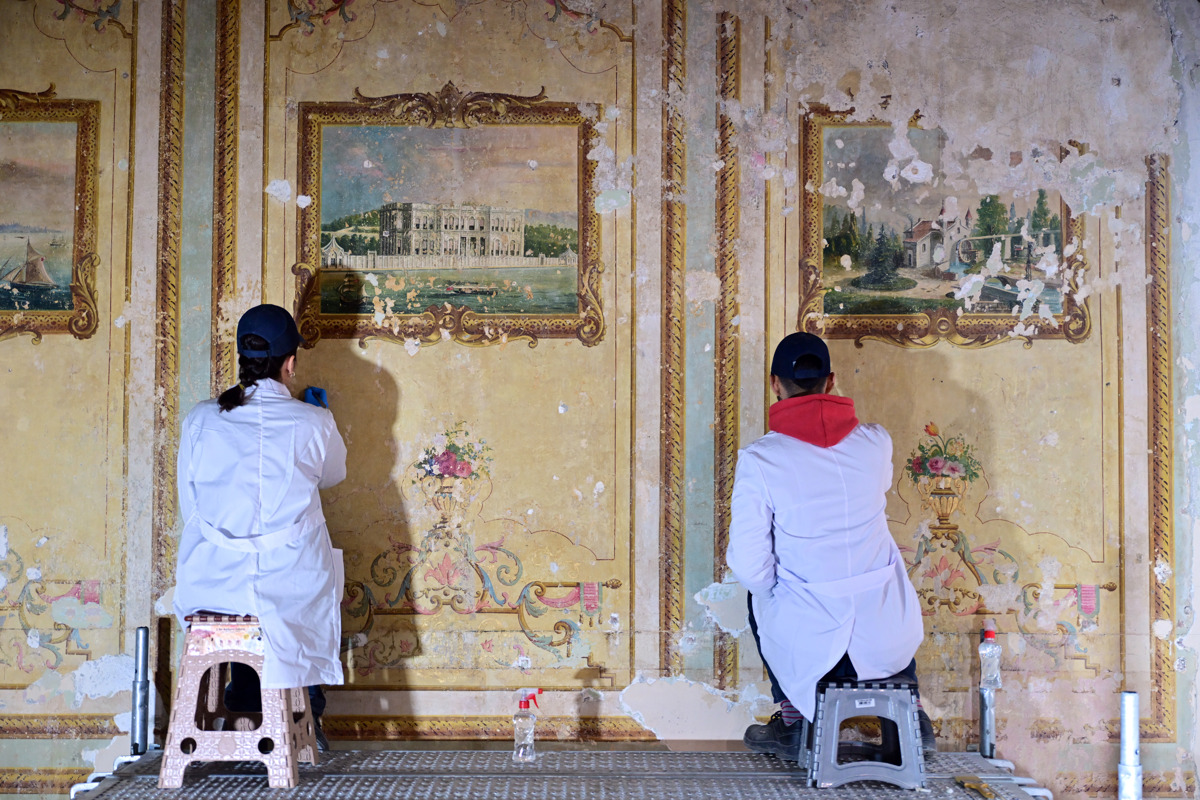Wall paintings discovered during restoration at the Yıldız Palace


During the ongoing restoration works at Yıldız Palace in İstanbul, Beşiktaş, wall paintings were discovered beneath 5 layers of paint and plaster in the section of the palace known as the "Çukur Saray" (Hollow Palace).

Yıldız Palace, initially commissioned for Sultan III. Selim's mother Mihrişah Sultan (1789-1807) and later used as the main palace of the Ottoman State during the reign of Ottoman Sultan Abdulhamid II (1876-1909), has opened its doors to the press for the first time in 5 years since undergoing restoration.
According to a report on the Anadolu Agency, Dr. Yasin Yıldız, the President of the National Palaces, stated that the restoration of many structures within Yıldız Palace has been completed as a result of the efforts carried out since 2018.

Yıldız, stating that they have achieved significant results in the works, mentioned that "Çukur Saray" is a large structure with 90 rooms. Yıldız conveyed that the walls of these rooms were previously entirely covered with paint and plaster, and emphasized that significant decorations were revealed beneath the plasters.

Yıldız mentioned that they observed artistic depictions on the walls of Çukur Saray resembling the Beykoz Pavilion and Beylerbeyi Palace.
Yıldız emphasized that these findings were the first of their kind encountered in such 19th-century structures.
The wall paintings were revealed after the removal of the poor-quality 5 layers of paint and plaster as part of the restoration efforts. Information about the artist responsible for these drawings, which appear to be hand-drawn on the plaster, or the origin of these paintings is expected to become clear through assessments to be conducted by experts from the National Palaces. (AÖ/PE)



